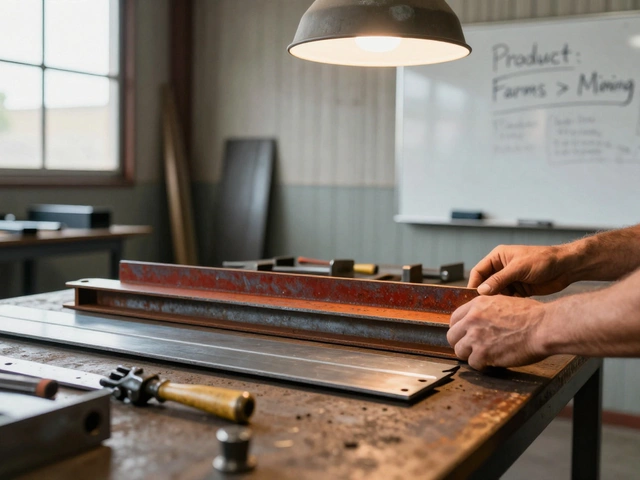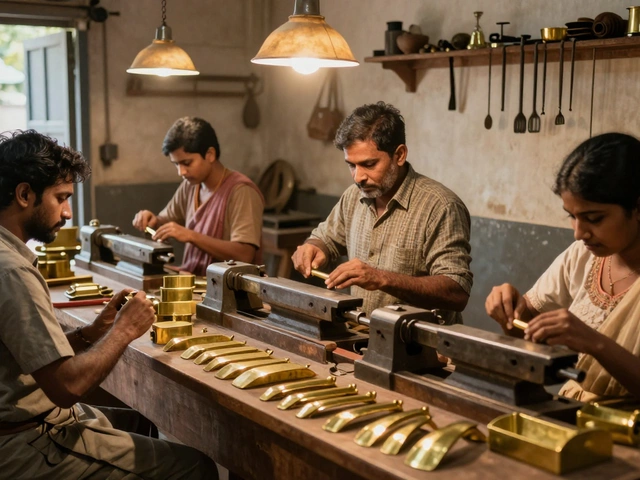Startup Costs: What You Really Need to Budget for Your Manufacturing Venture
Thinking about opening a factory or a small‑scale production unit? The first question that pops up is always the same: how much money do I need? The answer isn’t one‑size‑fits‑all, but there are common line items you’ll see in every startup budget. Knowing them up front saves you from nasty surprises later.
Core Expenses You Can’t Ignore
1. Plant & Space – Whether you rent a shed, lease a warehouse, or buy land, space is your biggest fixed cost. In tier‑2 cities you might pay as low as ₹30‑₹50 per sq ft per month, while prime locations can be double or triple that. Remember to factor in electricity, water and waste disposal fees.
2. Machinery & Equipment – This is where the numbers jump. A basic CNC machine can run from ₹2 lakh to ₹15 lakh depending on capacity. The post “Understanding the 5 M's of Manufacturing” breaks down how to match machine choice with product demand, so you don’t overspend on idle capacity.
3. Licenses & Approvals – Manufacturing in India requires a slew of clearances: factory license, pollution control board (PCB) consent, GST registration, and sometimes product‑specific certifications. The “Step‑by‑Step Guide to Launching a Small Scale Industry Successfully” lists each approval and typical fees, which usually total ₹50 000‑₹2 lakh.
4. Raw Materials & Initial Inventory – Stock enough to run at least one month of production. If you’re making textiles, keep a buffer of yarn and dyes; for food processing, secure raw crops or meat in bulk to get better rates.
5. Labor Costs – Skilled operators, supervisors and admin staff need regular pay. In most Indian states, a skilled operator earns around ₹15 000‑₹25 000 per month. Add payroll taxes and welfare contributions to get the true cost.
Hidden and One‑Time Costs
6. Installation & Commissioning – Getting machines up and running often needs specialist technicians. Budget 10‑15% of the equipment price for this.
7. Training – Your team won’t be an instant expert. Training programs, either in‑house or through external institutes, can cost ₹20 000‑₹1 lakh depending on duration.
8. Marketing & Sales – Even the best product needs a launch plan. A modest digital campaign or trade‑show booth can run ₹30 000‑₹2 lakh in the first year.
9. Working Capital – Cash flow gaps are the primary reason startups fail. Keep at least three months of operating expenses in a reserve account.
10. Contingency Fund – Unexpected repairs or price spikes happen. Set aside 5‑10% of the total budget as a safety net.
Putting these numbers together, a lean manufacturing startup in a non‑metropolitan area can launch with as little as ₹10‑₹15 lakh, while a more ambitious setup in a major hub may need ₹50 lakh or more. The key is to map each cost to a specific business need and eliminate anything that doesn’t directly drive revenue.
Finally, use the posts on this tag for deeper dives. “How to Become a Successful Manufacturer: Step‑by‑Step Guide for 2025” gives you a timeline to stage each expense, and “Highest Demand Product Ideas for Manufacturing Startups” helps you pick a product that justifies the spend.
Start with a clear spreadsheet, track every invoice, and revisit your budget every quarter. With realistic numbers and a solid contingency plan, your manufacturing startup will be set on a firm financial footing from day one.
How Much Money Do You Really Need to Start a Small Scale Business in 2025?
Ever wondered how much money you actually need to launch a small scale business in 2025? This guide breaks down real numbers, budget tips, and hidden costs for first-time entrepreneurs.
Read More




